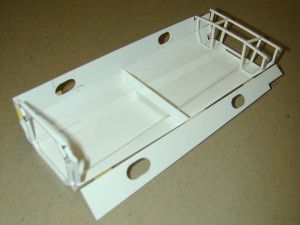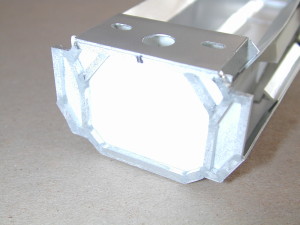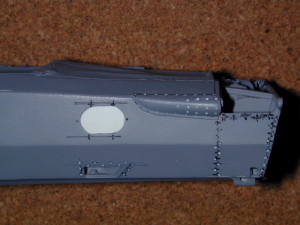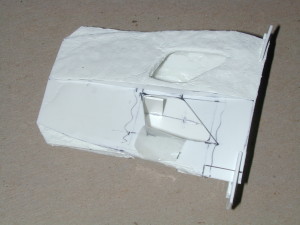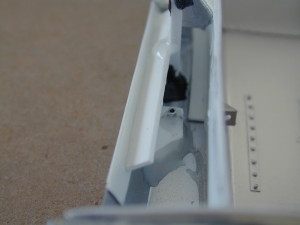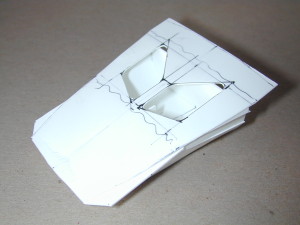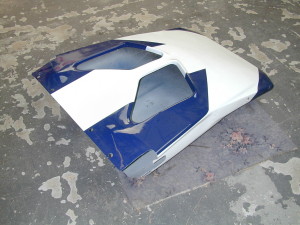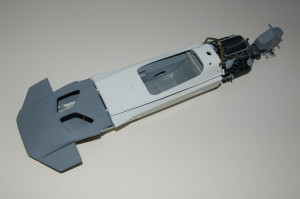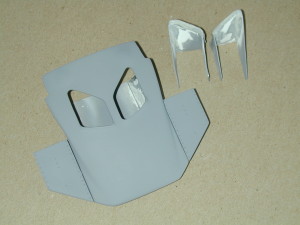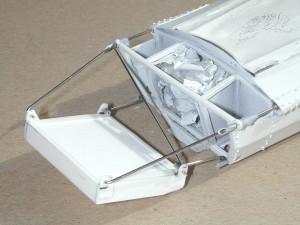Surtees TS9, 1971
History of the actual car
John Surtees’ skills in managing those working with him extended to expressing his engineering knowledge and ‘can-do’ approach to the car itself. This began in the F5000 category with the TS5 and then the TS7 Grand Prix car in 1970 in which John Surtees scored championship points in his own car (St Jovite, Canada). Through the period, design led by John Surtees himself was contributed to by Len Terry initially and also Peter Connew and Shahab Ahmed. Shahab continues to support the Surtees name and can sometimes be seen at historic events associated with his former team’s cars.
1971 saw the new TS9 being a conventional derivative of the low angular monocoque TS7 with Cosworth engine used as a stressed member through which the rear suspension forces were directed. In the later races in 1971, side water radiators were added, the further refinement of the design being designated TS9B as raced in 1972. The drivers in 1971 each scored only three points, Mike Hailwood scoring his fourth place in the Italian Grand Prix at Monza during the famous finish where Peter Gethin won in a BRM, the first five being covered by a mere ‘half’ second (0.60s to be precise). John Surtees continued to lead from the front driving twelve Grands Prix as well as manage the team, Rolf Stommelen drove ten Grands Prix with Auto Motor Und Sport German sponsorship to supplement the alternative colours of Brooke Bond Oxo/Rob Walker, even if the main team sponsor’s name was not on Stommelen’s car. Mike Hailwood who would spearhead the team in 1972 with a TS9B , however he drove just twice in 1971 in the TS9A effectively.
Team success was far below their potential, for difficulties regarding sponsorship and tyre supply quality, robbed them of serious funding and fundamental support, nevertheless it was trivial failings during races that distracted from the talented and enthusiastic driving efforts of Mike Hailwood especially and also John Surtees whose final points scoring outings in 1971 were very well received in this very good looking car in which the driver’s enthusiastic work behind the wheel, could easily be seen.
Images
The Model
This model comprises a scratch built tub and nose section thus far. This is as a result of examining and measuring a naked aluminium tub resting on trestles in the back of a high street garage in Dorset in April 2003. This tub was a recreation of a TS9 chassis, whilst in the purpose-built barn on Terry van der Zee’s farm there was an original TS9B car driven by John Bladon. In the same establishment was a well equipped workshop and numerous new parts were being fabricated from aluminium and steel, whilst several copies of the only piece of bodywork (the nose section) were finished in gloss black, ready for painting in the colours of Rob Walker, Brooke Bond Oxo. I also visited the home of Judie and Frank Lyons north of London and studied Judie’s original TS9. By these means, I was able to construct a scratch-built monocoque representing the 1971 Surtees TS9, a beautiful car in my opinion and absolutely typical of the era – Cosworth DFV engine, English designed and made tub, Hewland gearbox, small airbox, large and vented nose section for a forward water radiator, large rear wing positioned relatively far forward over the gearbox. The fact that it was designed, managed and driven by John Surtees, such a model represented a vital marque within the history of Formula One in the 1970’s. The car was not without some successes albeit isolated e.g. Mike Hailwood’s fourth place in 1971 and second place in 1972.
This model was constructed in the same way as the original with square-section polystyrene representing square-section steel and then plasticard applied to this to replicate the aluminium skinned monocoque. The engine and roll-over bar connected to the tub in the same fashion as on the original and the footbox and front suspension pick-up points were in-effect identical 1/12 scaled items.
At this time, the model consists of a completed tub (inner and outer monocoque), a nosecone, forward radiator and steel supports. The dummy engine can affix into the tub as in the real car and the seat is in a state of semi-construction. The engine and gearbox need to be acquired from Tamiya sources and then front and rear suspension, exhausts, airbox and rear wing made from materials such as brass, aluminium and steel rod/tube, plasticard, Milliput and any other donor items that come to hand as the work progresses. Having acquired the paint code many years ago, I hope to reproduce the look of the car perfectly, also sourcing-out the decals to a professional decal manufacturer as was done to complete the Tyrrell artwork.
This particular project is one I would be very keen to re-establish work on, but time is scarce and dilution of effort is the main enemy, due to the thousand and one things that keep normal life balanced and going well, not to mention new projects like Photobooks and videos (2013/14).

